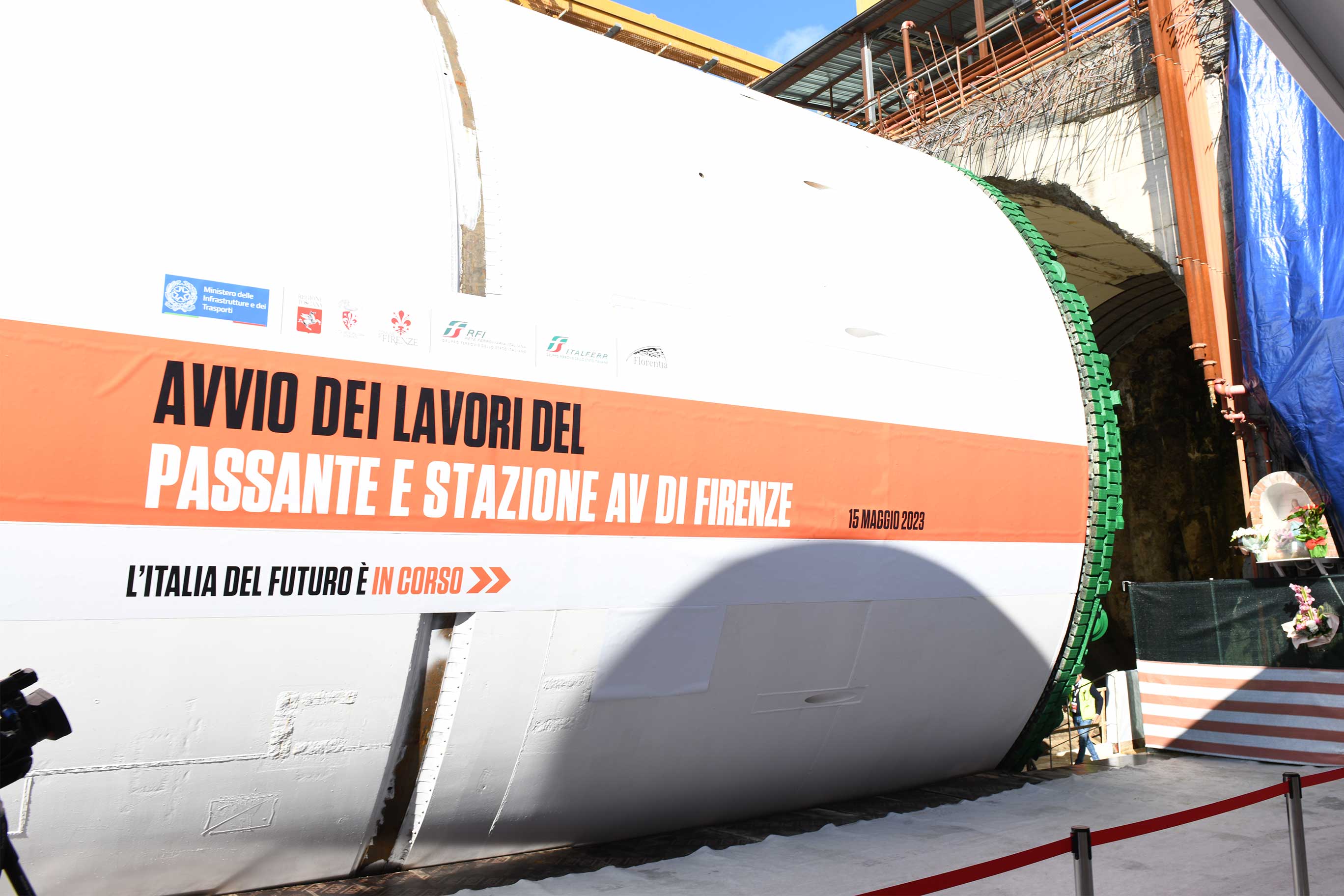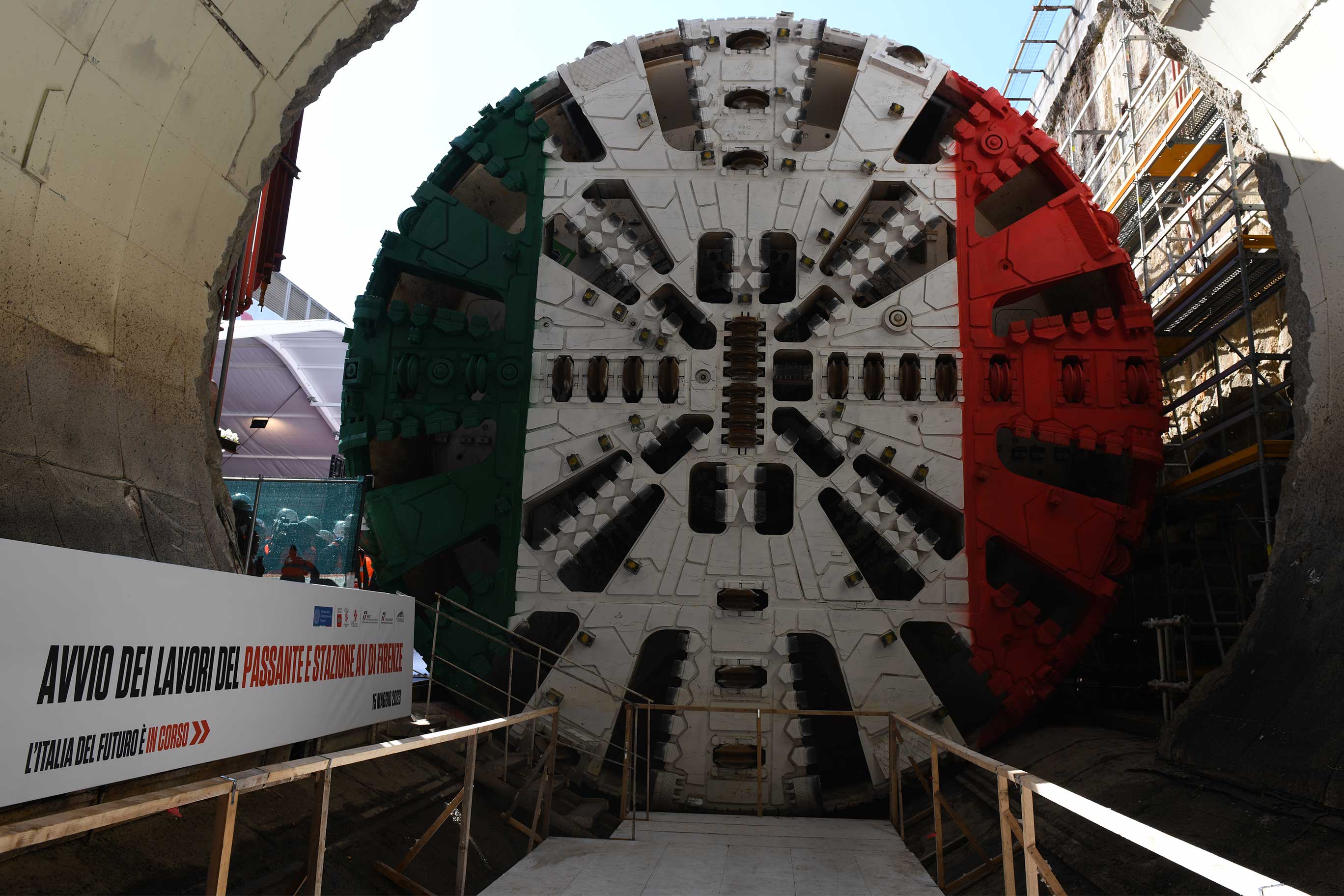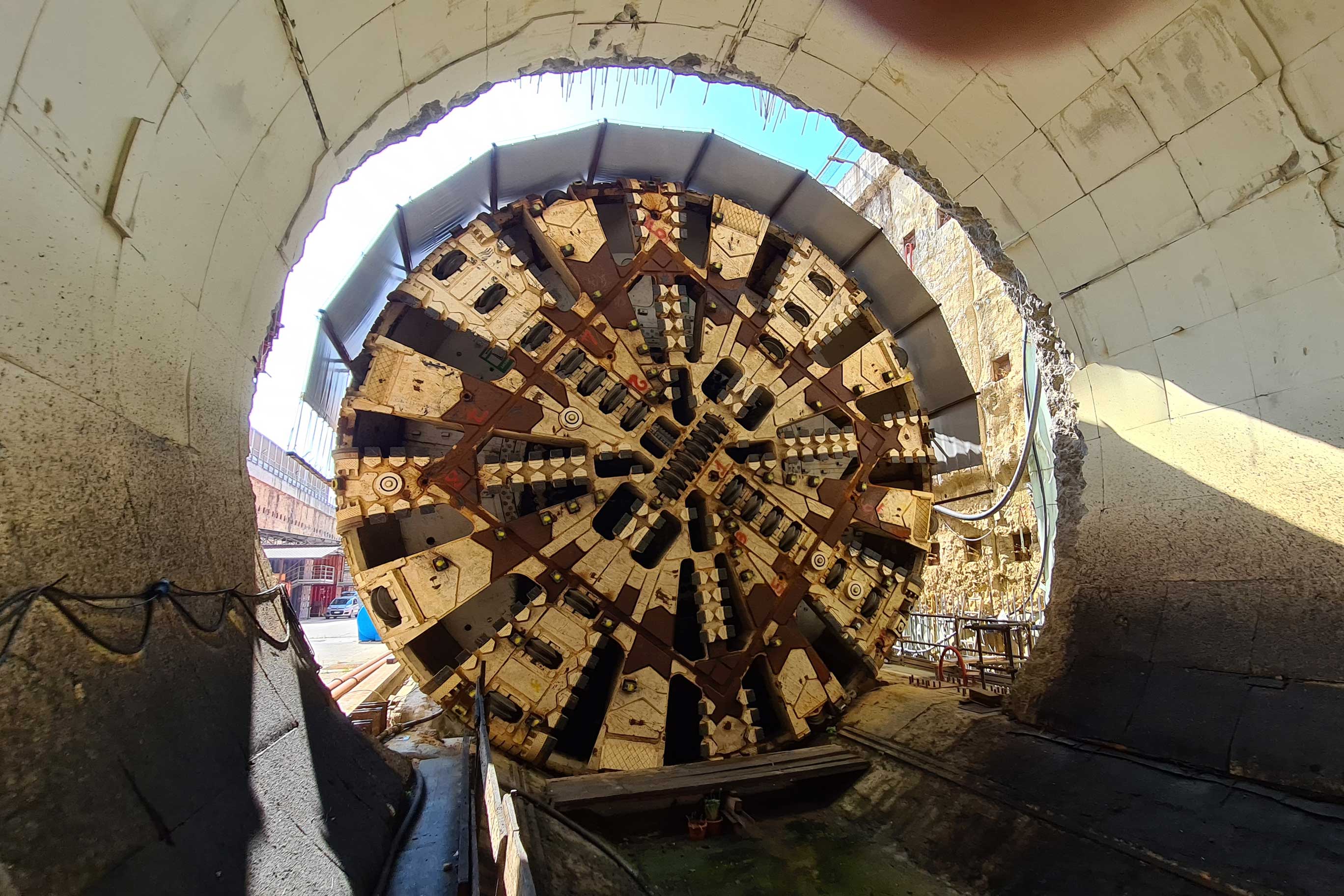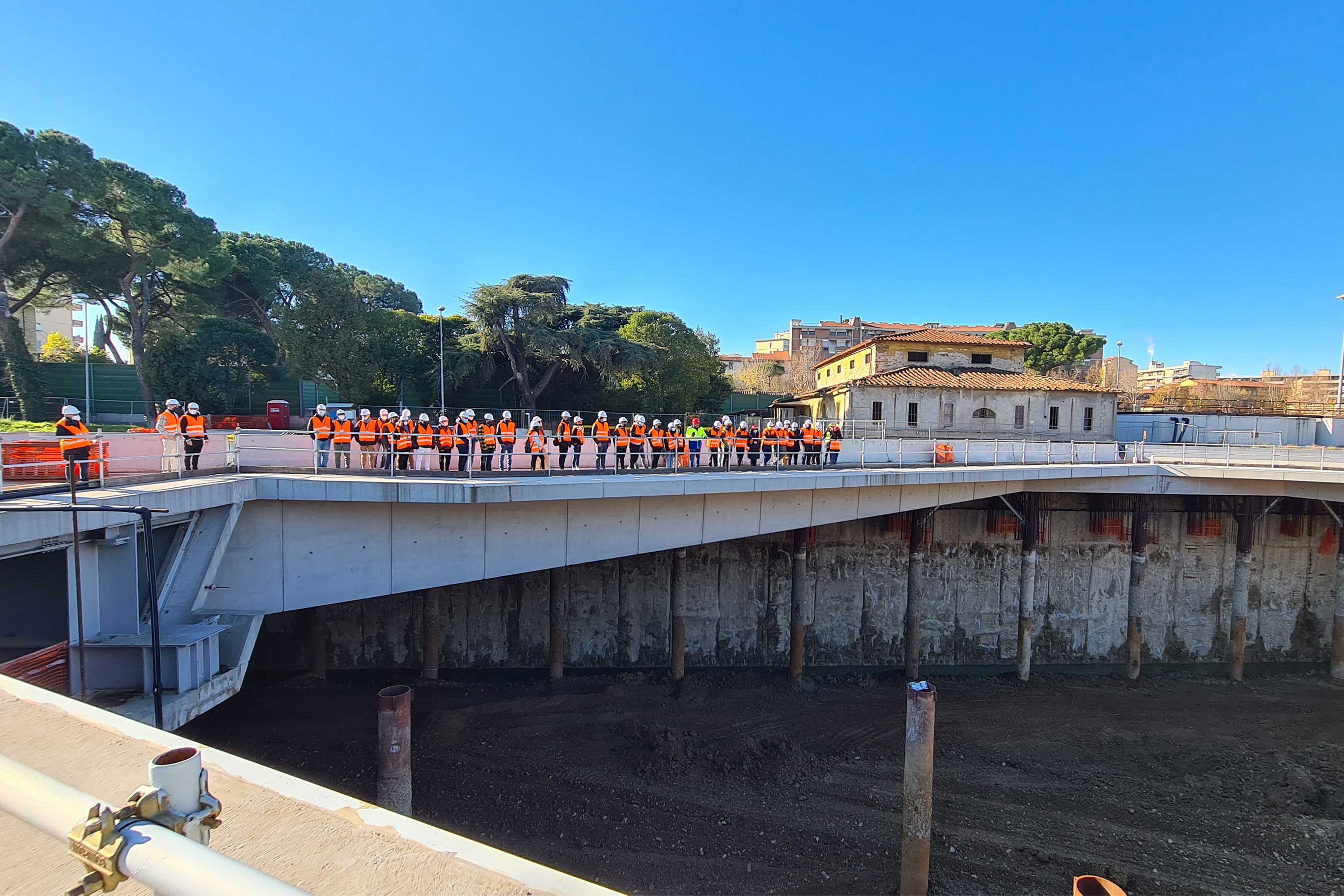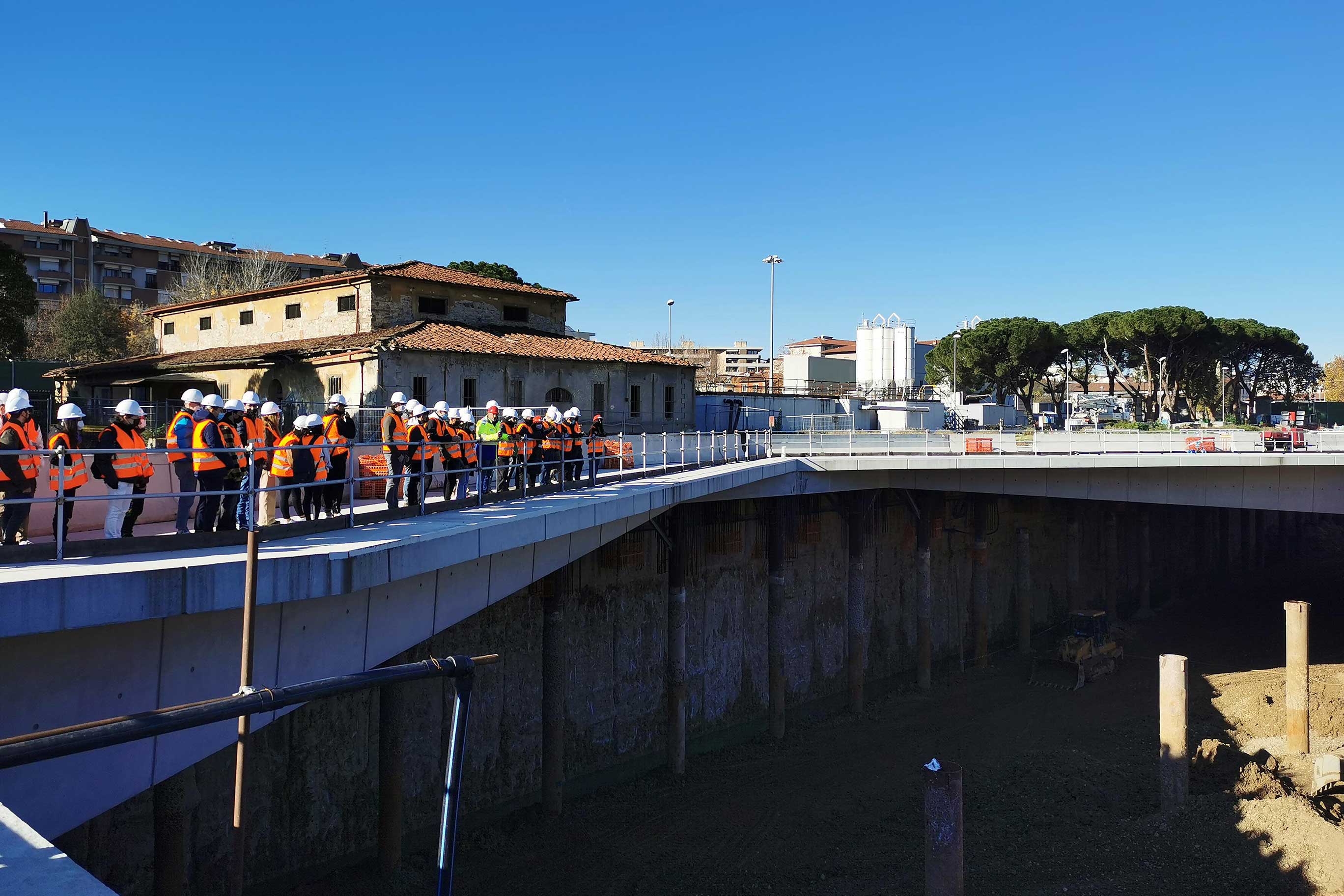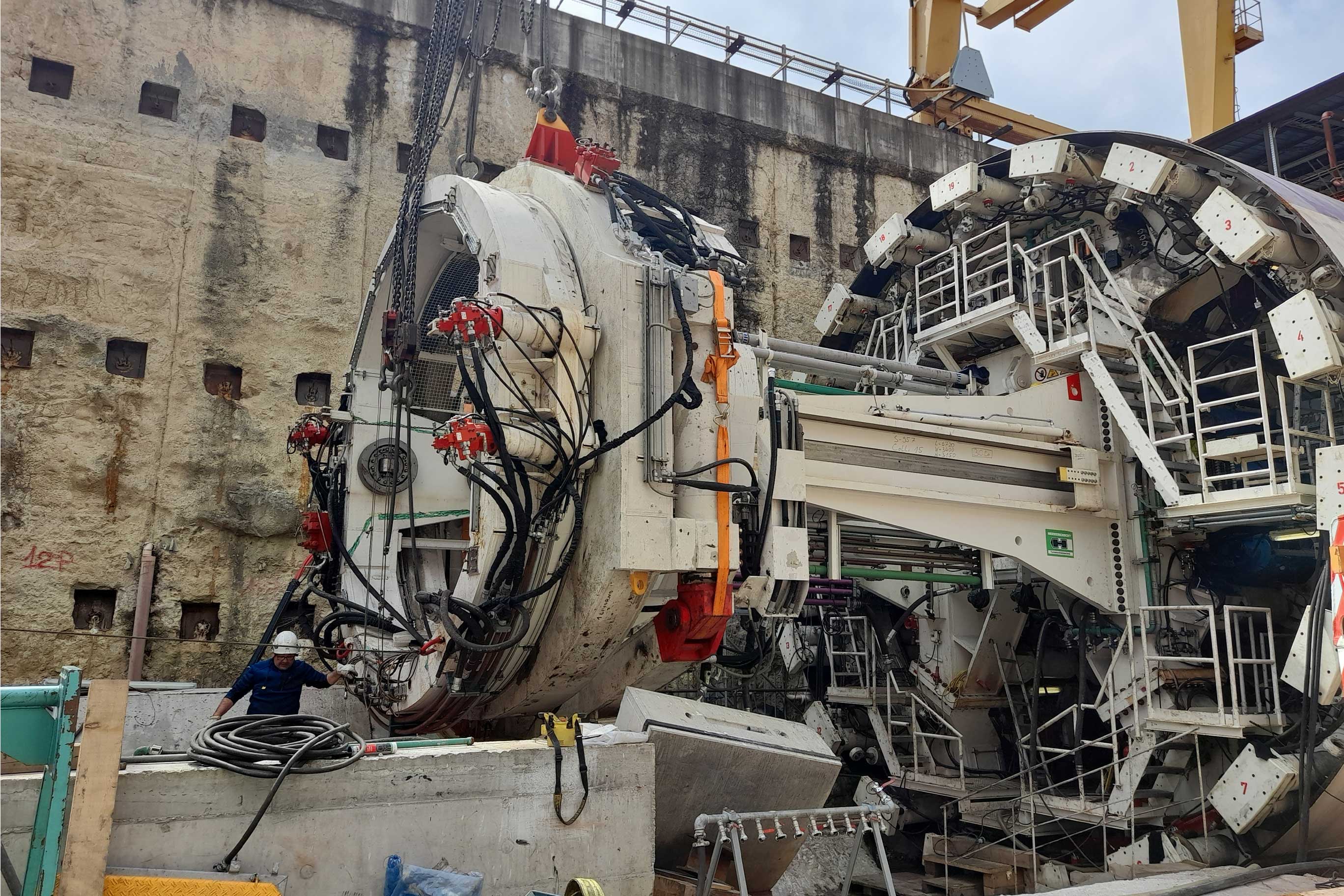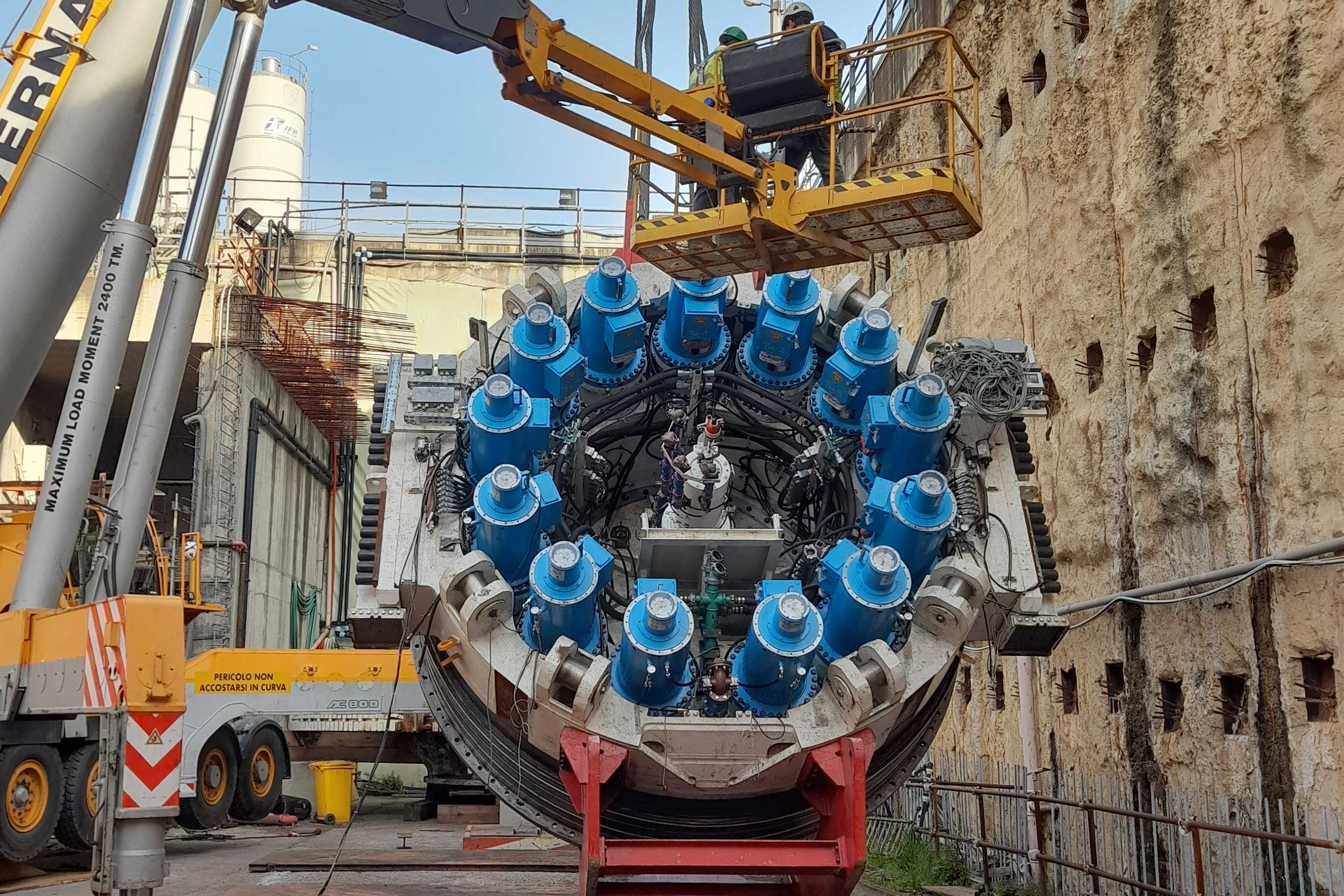The bypass is the urban stretch of a new High Speed/High Capacity line that runs for about 7 kilometres underground with two parallel tunnels 20 metres below the surface, completed with two above-ground terminal sections – to the north between the Firenze Castello and Firenze Rifredi stations and to the south near the Firenze Campo di Marte station. The tunnels will be excavated using mechanised techniques availing of EPB TBMs (Earth Pressure Balance Tunnel Boring Machines) with a diameter of approximately 9.5 metres.
Along the underground route, in the Belfiore-Macelli area about 1 kilometre from the existing central station of Firenze Santa Maria Novella, the new Florence HS/HC station will be built, designed by the architectural firm Foster and the engineering company Ove Arup. The plan of the new station has a dimension of 450 metres x 50 metres, being partly underground and partly elevated. The depth of the track and platform level is approximately 22 metres, whilst the roof rises approximately 18 metres in height. The structure consists of four levels – the platforms for train access, the mezzanine floor (acting as a distribution element for the flow of passengers), the ground floor and the first floor. The first two levels are underground, whilst the first floor is above ground and located inside the roofing.
Serviced by HS trains, the station will be interconnected with the station of Santa Maria Novella and the entire surrounding urban area thanks to various modes of transport, with the new people-mover that will operate between the new station and Santa Maria Novella, the second line of the city’s tram system already in operation and the new surface-level railway stop, with duly-enhanced connections with city buses.
Bypass
The underground bypass and new Firenze Belfiore station shall free the ground-level network from the transit of HS trains, enriching the offer of services to the advantage of citizens, businesses and economic and tourist activities, benefiting regional and metropolitan mobility, whilst redeveloping the municipal and railway areas between Belfiore-Macelli and Santa Maria Novella.
Firenze Belfiore
This station is destined to become the main city and regional interchange node, hosting fast trains running between Milan and Rome and representing an integrated transport hub – an innovative rail-road interchange facility that will be connected to the Santa Maria Novella station and the historic centre of Florence.
The project will have a “vertical distribution” where the interior space is open at full height, making the trains visible from the surface and ensuring natural lighting for the platforms. Escalators and inclined conveyors, through pathways marked by different degrees of natural and artificial light, connect the rail level (at 25 metres below street level) to the ground floor and the elevated floor of the retail spaces.
The new configuration of the Florentine railway network will ensure that High Speed trains shall no longer interfere with regional trains, thus improving their regularity whilst increasing the surface line capacity, thus laying the groundwork for a prerequisite increase in local routes. Traffic volumes for Firenze Santa Maria Novella may even have an average increase on the various lines.
Inside the Base Camp on Via Circondaria is an Infopoint dedicated to investments and worksites affecting the city. This information point serves to inform locals about projects and works in the area, with constant updates on the progress of works and the benefits they will bring to the mobility of the Florentine, regional and national network.
